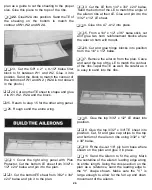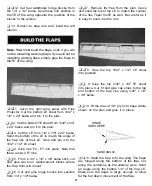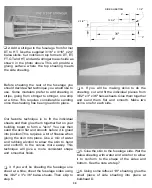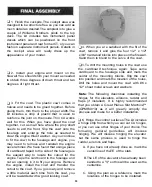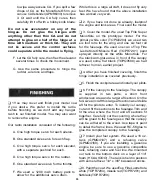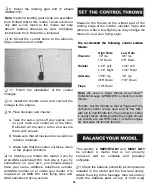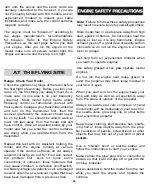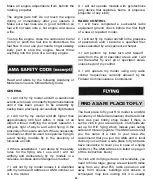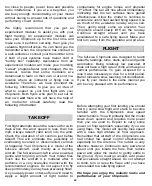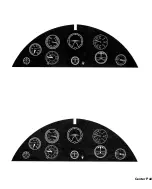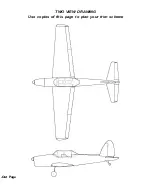
too close to people, power lines and possible
radio interference. If you are a beginner, you
are busy enough concentrating on your model
without having to answer lots of questions and
performing crowd control.
We highly recommend that you get an
experienced modeler to assist you with your
flight training. An experienced modeler can
take your Chipmunk up for the first time and
make sure it performs correctly, then give you
valuable flight instruction. He can hand you the
transmitter when the Chipmunk has climbed to
a safe altitude or connect your transmitter to his
if both of your systems have trainer cord or
"buddy box" capability. Assistance from an
experienced modeler will make your modeling
"career" progress faster (and cheaper). We do,
however, realize that some modelers are
determined to learn on their own or are not in a
location where an instructor or flying club is
available. Therefore, we have provided the
following information to give you an idea of
what to expect on your first flight with your
Chipmunk. Both flyers who plan to set out on
their own and fliers who will have the help of
an instructor should carefully read the
following information.
TAKEOFF
First flight attempts should be reserved for ca Im
days when the wind speed is less than five
mph. Always takeoff (and land) into the wind.
Check the operation of all controls just before
takeoff. This will eliminate the possibility of
overlooking reversed or disconnected controls
(it happens). Your Chipmunk is a model of the
full-size aircraft, used mainly as a training
aircraft. The full-scale aircraft is a low powered,
gentle and forgiving aircraft. Your model flies
much like the aircraft it is modeled after. It
performs in a very scale-like manner with the
recommended engines. Do not expect it to fly
like sport models you may have previously flown.
As you apply power on takeoff you will need to
apply a slight amount of right rudder to
compensate for engine torque and propeller
"P" effect. The tail will rise almost immediately,
indicating that the tail surfaces have gained
effectiveness. Allow the model to continue to
accelerate until it has reached flying speed. Use
as much of the available runway as you can.
Then, gently apply some up elevator. Your
Chipmunk should slowly lift from the runway.
Continue straight ahead until you have
accelerated to a safe flying speed. Make your
first turn away from the spectator and pit area.
FLIGHT
The full-size Chipmunk was designed to teach
takeoffs, landings, turns, stalls, spins and gentle
aerobatics. Being relatively low powered, it
does not have a high rate of climb and has poor
vertical performance. To gain airspeed for a
loop it was necessary to dive for a brief period.
Barrel rolls were slow, teaching roll coordination.
If you fly your model in the same manner you
will be very pleased with its performance.
Before attempting your first landing you should
first try some slow flight and stalls to become
familiar with the Chipmunk's slow speed
characteristics.You will probably find the model
slows down quicker and requires more power
than you are used to. Expect to carry some
power on final approach, especially if you are
using flaps. The model will quickly lose speed
with a nose high attitude on final approach.
Remember that aircraft of the Chipmunk's era
had limited low speed control effectiveness,
especially for the ailerons. The rudder is very
effective, however. Continue to carry power and
speed until you initiate the flare, then reduce
power and allow the model to gently settle to
the ground. If you must go around, add power
and accelerate straight ahead. Do not attempt
to climb, turn or raise the flaps until you have
accelerated to a safe flying speed.
We hope you enjoy the realistic looks and
performance of your Chipmunk.
40

